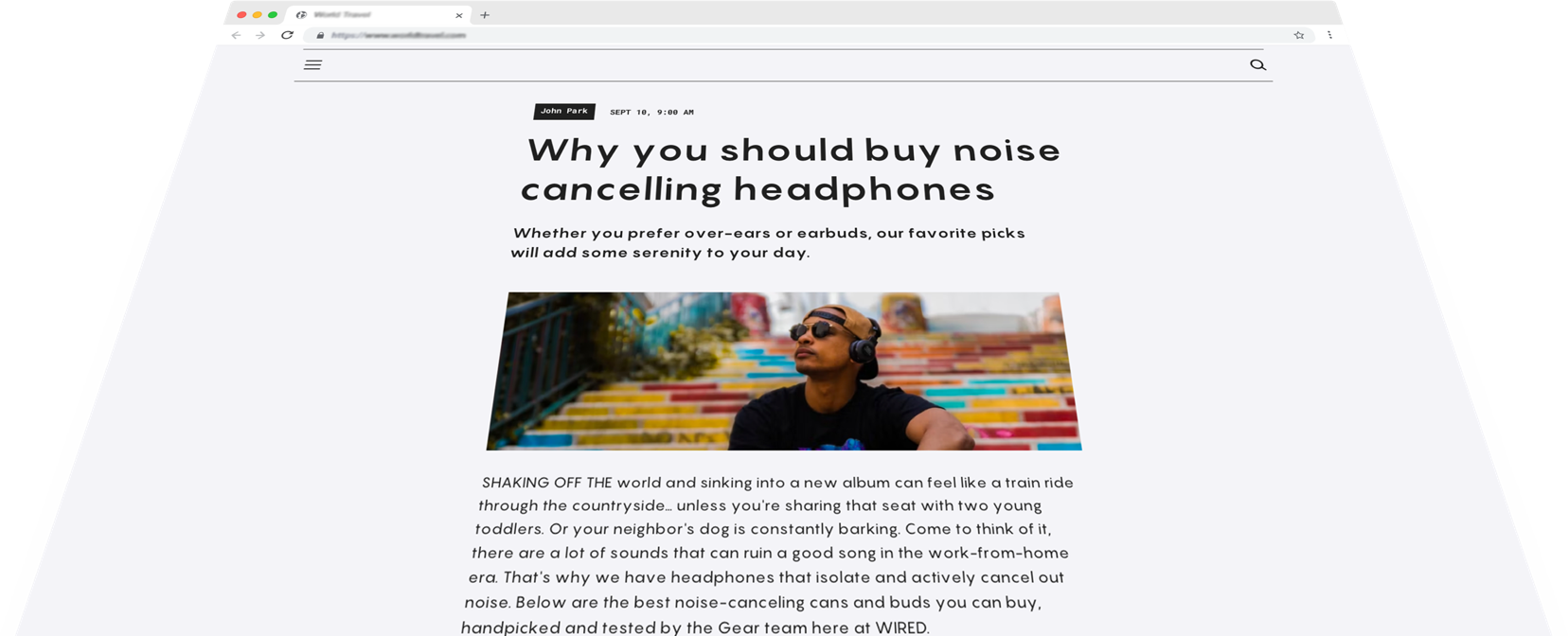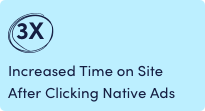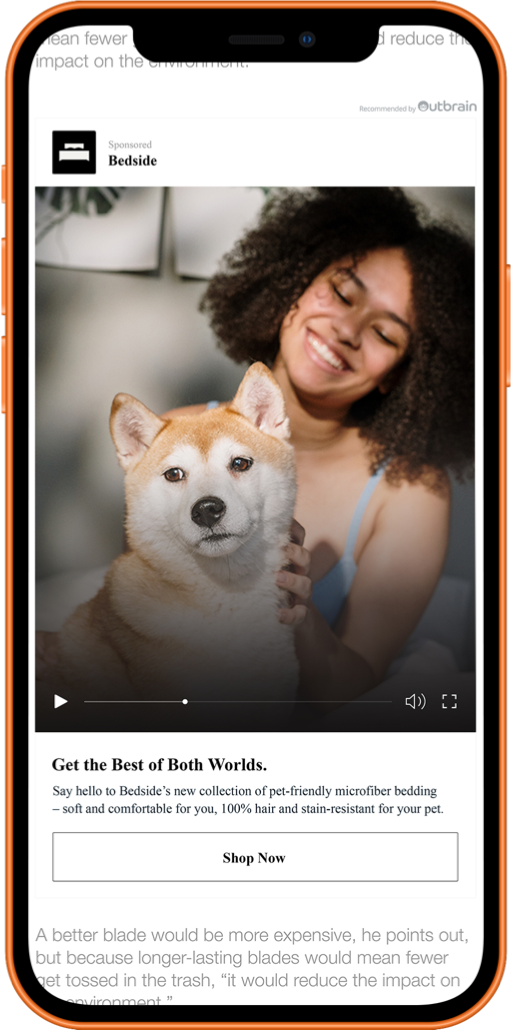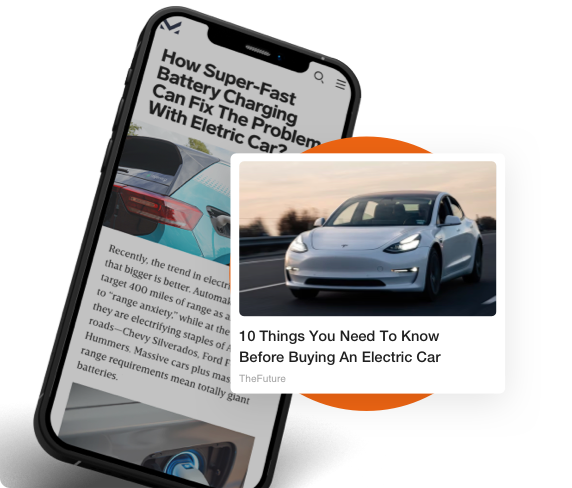Contextual Advertising -
Why Context Counts
In a cookieless world, contextual advertising is the optimal solution for effective audience targeting and engagement.
Start Now



What Is Contextual Advertising?
Contextual advertising is a digital advertising method in which ads are targeted to viewers based on the context of the webpage the ads are featured on.
For example, an article about solo travel features ads for airline tickets, travel insurance, or luggage. And a blog about DIY home renovations may show an ad for power tools, or an ad promoting an online course about interior design.


Contextual Advertising vs Contextual Targeting
Contextual Advertising
Contextual advertising targets viewers’ interests in the context of the page they are reading. It is fair to assume, after all, that if a consumer is reading a travel article, they may be considering a vacation. At the very least, it is an indication that the people who visit the page have an interest in travel. That provides a very strong context on which to base targeting strategies for future ad placements and campaigns.
Contextual Targeting
Contextual targeting is an online strategy that enables marketers to target users online based on contextual signals rather than third-party data. In this way, it offers far more privacy for individual web users, and this is critical as we move towards a world without cookies or third-party data tracking.

Contextual advertising strategy should extend far beyond just targeting campaigns to content that matches a certain topic. Native ad platforms like Outbrain analyze how combinations of topics translate to consumer interest, intent and action, and provide a range of optimization tools to support contextual advertisers. This enables marketers to reach higher levels of targeting accuracy and boost their campaign results
Start Now
How Does Contextual Advertising Work?
While contextual advertising is a form of targeted advertising, it is not based on user data, so it does not target individual consumers. Rather, contextual advertising uses a crawler that scans web page content and metadata, and categorizes the page according to these markers using smart machine learning technology. When a visitor lands on a page, ads are served based on the page’s content and meaning, not the user’s information or past browsing habits.

Crawler scans web page and analyzes content


Page is categorized based on data analysis


User lands on page


User sees ads related to the page’s categorization and content
What Are The Benefits of Contextual Advertising?
Thanks to advancements in AI, contextual advertising is becoming more accurate and powerful.
Contextual advertising enables marketers to understand and categorize the meaning and purpose of web content in a much more sophisticated way, so they can better target users with ads that hit the mark. At the same time, it doesn’t rely on third-party data, so it protects user privacy while ensuring brands can advertise safely and effectively.
Excellent targeting solution for a cookieless world
Meets increasingly strict online privacy laws
Engages users according to their interests
Makes ads more relevant and compelling
Boosts click-through rate & ROAS
Enhances brand safety
Is Contextual
Advertising Effective?

Today, with concern about online data privacy issues and increased regulations like GDPR and CCPA, contextual advertising is emerging as a viable solution for effective targeting of audiences online. Privacy laws are only going to get stricter, so it is not an exaggeration to say that contextual advertising – not user tracking and targeting – is the future of online marketing.
But does contextual advertising work? Here are some indicators:

More marketers are learning about the benefits of contextual advertising.
56% of marketers are aware of contextual advertising as a solution to cookieless targeting.

The contextual advertising market is growing fast.
The global contextual advertising market is forecast to have a growth rate of over 13% between 2020 and 2027.

Consumers want to see relevant targeted ads, yet are concerned about data privacy.
50% say that digital ads help them find products that interest them. Yet 44% say they feel user targeting to be invasive.
How to get started with Contextual Advertising
As the cookieless future draws closer, and marketers search for alternative targeting methods, more contextual advertising tools and solutions are becoming available.
Outbrain has long expertise in the development of contextual advertising tools, from first-party data based Interest Targeting, to IAB Category targeting, and moving towards Conversion Bid Strategy and Engagement Bid Strategy, the world’s first fully cookieless contextual targeting solution for native ads.
Contextual Targeting Tools
 Interest Targeting
Interest Targeting
Target campaigns according to a range of contextual topics that users have expressed interest in across a given publisher. To achieve this, Outbrain uses the Interest Graph, created for any user who engages with ads on the Outbrain native network, providing an added layer of contextual granularity.
More about Interest Targeting Category Targeting
Category Targeting
Web pages are categorized by IAB vertical based on headline and content. Advertisers can target in a more granular way according to IAB’s hundreds of verticals and interests. Reach relevant audiences with engaging, contextual native ads about the vertical that interests them right now.
More about Category TargetingCookieless Targeting Tools
 Conversion Bid Strategy
Conversion Bid Strategy
An advanced AI based tool that uses contextual signals to enhance bidding on the Outbrain native ad network. Over time, CBS “learns” which content users engage with, and creates accurate automated bids for placements that drive more efficient conversions, and higher ROAS.
More about CBS Engagement Bid Strategy
Engagement Bid Strategy
EBS is the first cookieless solution that uses client’s existing on-site behavioral data for optimization of native ad campaigns. There is no need for pixel installation or third-party tracking. EBS targets audiences more accurately according to user attention and intent, driving better performance.
More about EBSContextual Advertising Examples
Contextual Video Advertising
In any given month, 85% of US internet users will consume video content. If video is king, then contextual video advertising is the crown jewels. Contextual video targeting is when advertisers target audiences with video ads that match the content of the video they are watching right now. Using contextual targeting to serve video ads captures the viewer’s intent and attention at exactly the right place and time. Consumer research confirms this.
A study by vi Video Intelligence, an Outbrain company, compared three groups of internet users: The first group watched a video ad about coffee, which was not related to the text or video content on the web page. The second group saw the same video ad, in an article with text about coffee but unrelated video content. The third group watched the ad on a web page that featured text and video content about coffee.
The Results?
95% of the third group paid attention to the video ad. Contextual video advertising wins.



Why Has Contextual Advertising Suddenly Made a Comeback?
The renewed interest in contextual advertising was accelerated by the moves taken by Big Tech to comply with new data privacy regulations. With the release of Apple iOS14, users now have the ability to opt out of sharing their personal data with third-party apps, making it impossible for advertisers to track user behavior and target users based on that data.
For its part, Google announced in early 2020 its plans to phase out support for third-party cookies on Chrome. While they later walked back the announcement and said there would be a delay in implementing the new cookieless world, the writing is on the wall – cookies won’t be around forever, and the way forward is contextual advertising.

